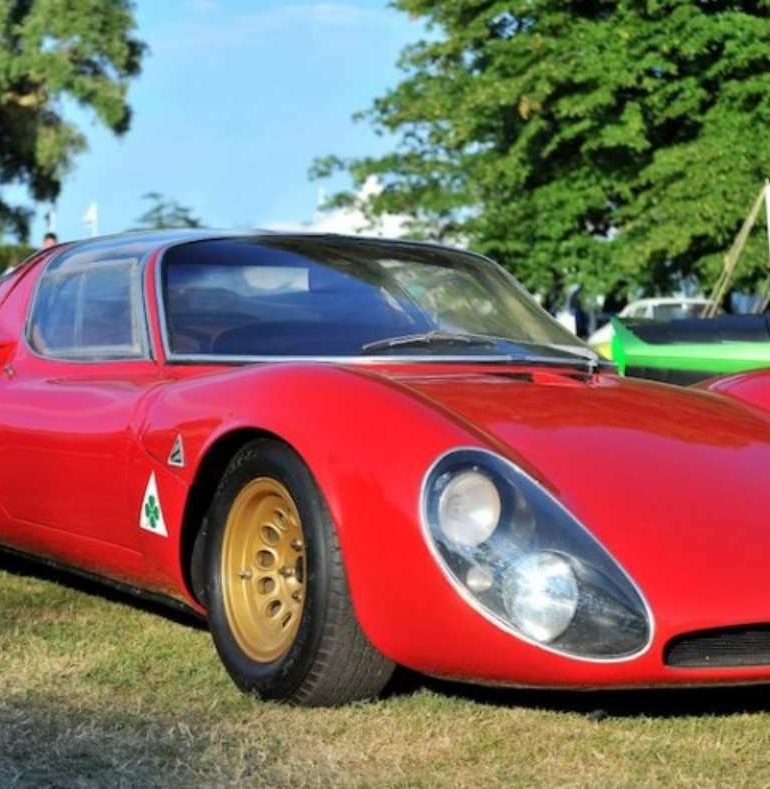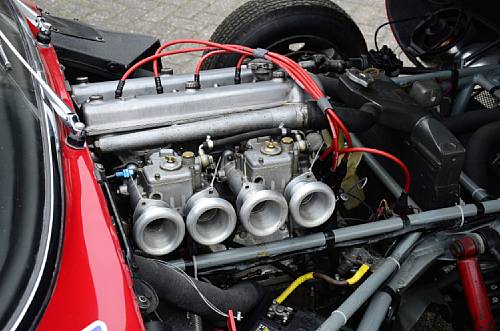Based on Alfa Romeos’ successful endurance racer, the Tipo 33, the Alfa Romeo 33 Stradale would be on the top of most peoples list as one of the most stunning cars ever to be made. With only 18 cars ever produced between 1967-1969, the 33 Stradale delivered an astounding performance for that era with specs that remain remarkable even today.
The Lead-up to the 33 Stradale
After over a half-century of fielding sports and racing cars in front of thousands of spectators, Alfa Romeo found itself in an uncomfortable position. The company preferred making fast and luxurious models, but they needed to be hand-built and took too much time and effort to produce. In order to remain solvent, the company had been making small, mass-production vehicles for the general public.
The company’s competitive streak had, however, remained strong over the lean years. By 1966, management felt the company was strong enough to return to racing. Their ambition was to challenge the rest of the world and win the coveted FIA World Sportscar Championship.
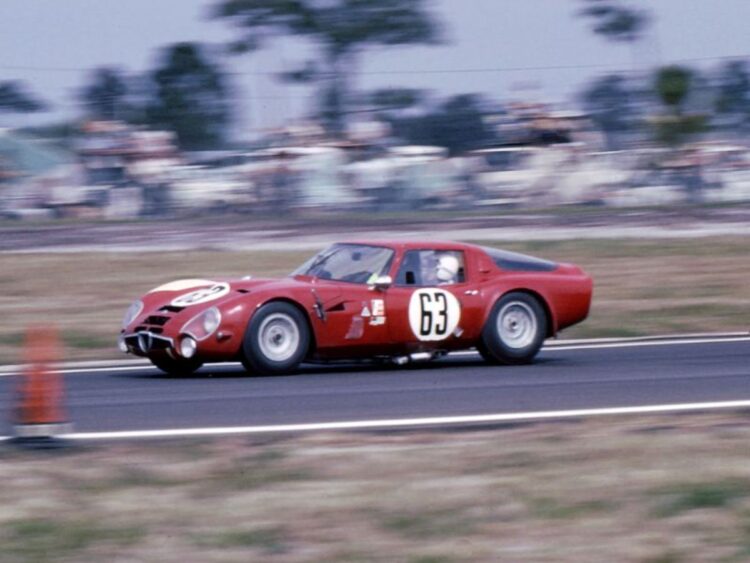
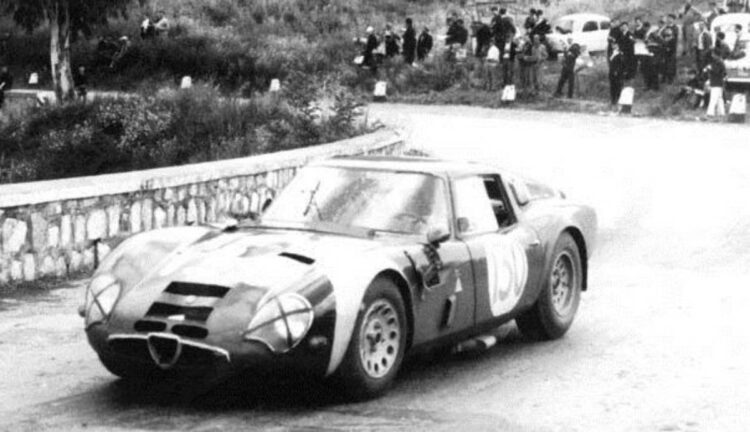
The championship series was extremely popular with the public and management felt that returning to racing would be an excellent promotional opportunity. Two new mid/rear-engine cars, the Guilia TZ and TZ2 prototypes were produced using a 1600cc engine fitted inside a futuristic H-frame chassis. The cars were outsourced to Autodelta, a specialist race preparation workshop founded by renowned auto engineer, Carlo Chiti.
Racing the Tippo 33
Chiti and his team developed a powerful new two-liter all-aluminum V8 engine that produced 270 bhp and installed it in Alfa’s new Tipo 33. The over-square 1,995cc (2.0 liter) engine used dry-sump lubrication and had a bore and stroke of 78 mm × 52.2 mm (3.07 in × 2.06 in). SPICA fuel injection with four ignition coils and two spark plugs for each cylinder completed the package.
The new engine used four chain-driven camshafts to operate the valve train with a rev limit of 10,000 rpm and a compression ratio of 10.5:1. The rated horsepower was 230 PS (227 bhp; 169 kW) at 8,800 rpm and 206 Nm (152 lb-ft) of torque at 7,000 rpm in road trim and 270 bhp (201 kW) in race trim.
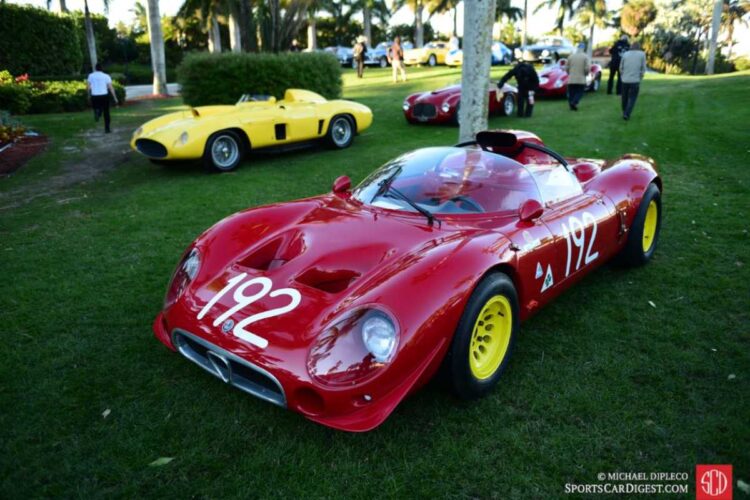
The T33’s first race was at the Belgian Hillclimb in Fleron on 12 March 1967, the only competition it could race in prior to Sebring, to which Chiti had committed a team. Fortuitously, the lower-geared car was victorious with Teodoro Zeccoli behind the wheel. Whimsically, during the event, the car gained the nickname, “Periscopica”, because of the pronounced ram-air intake that Chiti had located directly behind the driver that looked similar to a periscope.
The car did indeed seem to be ready for competing in the International Championship for Sports-Prototypes. It competed in the most iconic endurance races of motorsport, including the 24 Hours of Daytona and Le Mans, the Monza 1000 km, the Nürburgring 500 km, the 12 Hours of Sebring, and the Targa Florio.
Creation of the Alfa Romeo 33 Stradale
Luraghi’s successful choice to return Alfa Romeo back to racing had the ultimate goal of attracting more customers into showrooms. Not wanting to limit his options to just sports models, Luraghi asked Chiti to begin production of a high-performance road car based on the winning T-33 to compete with other European manufacturer’s ‘dream cars’.
Chiti approached renowned Tuscan body designer Franco Scaglione, who was generally considered the most talented car design artist in the automotive world, to design the body of the car.
Scaglione was known to have an impeccable sense of beauty and artistic “design language” with a low tolerance for compromise and a driven fury for transforming almost anything into a shape of perfection. Scaglione is credited for giving the new 33 “Stradale” its dramatic shape and nearly perfect proportions.
The name “Stradale” was chosen because in Italian the word means “road-going” and has often been used by other Italian car manufacturers to designate their street-legal version of a racing car.
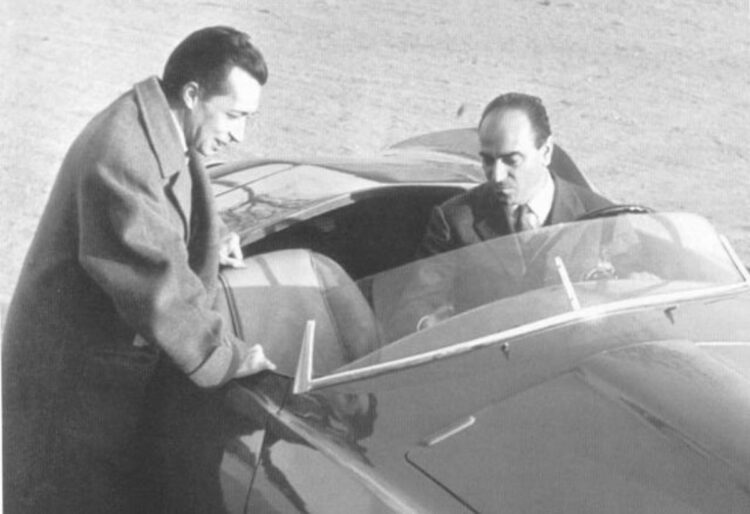
Scaglione had worked for Bertone between 1953 and 1959 and was considered a master of aerodynamic design. He had previously designed some Alfa Romeo cars like the Berlinetta Aerodinamica Tecnica (BAT) and the Lamborghini 350 GTV, and the Porsche 356B Abarth Carrera which was later transformed into the famous 911 series.
Scaglione gave President Luraghi a few preliminary drawings and Luraghi chose one that he felt had extraordinarily rare beauty, saying it had the “perfect artistic shape.”
The original proposal was to build 50 units based on the new winning “Fléron” chassis (though only 18 ever produced). The chassis design was based on large diameter, riveted magnesium tubes that were connected using the identical diameter cross members at the rear of the cockpit to form an irregular “H” shape perimeter frame for the car.
The fuel tank would be situated inside the tubes to make sure the ‘roll center’ and balance of the chassis would be maintained regardless of the weight of the fuel remaining in the tank.
The engine, double wishbone suspension, and engine were mounted on a subframe of magnesium-alloy. The magnesium tube chassis was produced by Aeronautica Sicula, a small aircraft factory located in Palermo while the front and rear sub-frame was done by Campagnolo in Vicenza.
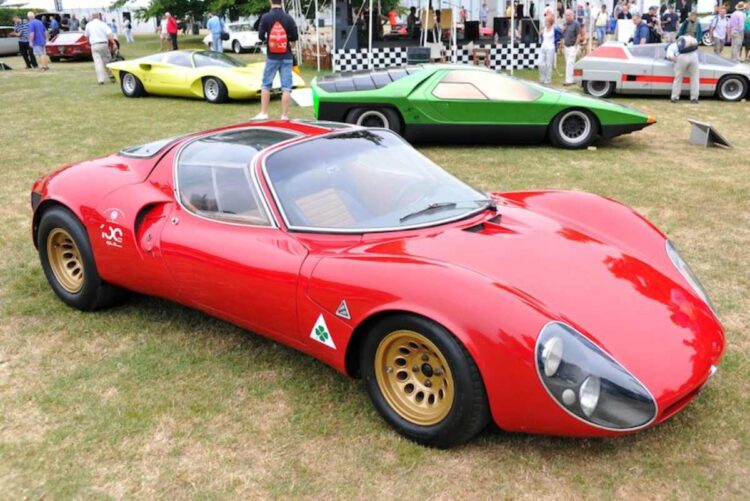
Alfa’s new road version, the 33 Stradale, did not differ much from the racecar. The tubes forming the mainframe were made of steel and the two magnesium sub-frames were made with reinforced steel so the car would have better impact protection. The wheelbase was also extended by 10 cm to give sufficient space for a driver to properly fit in the cockpit.
Scaglione’s attention to detail demanded full freedom in designing the dream car and the result was an uncompromised layout of stunning proportions. The car exactly followed President Luraghi’s directive to make the specifications no more than 5% less than the competition version.
One problem with the extremely low design of 99 cm was the difficulty of getting in and out of the car. To resolve the problem, Scaglione created a vertical opening along with part of the roof to fit the doors that gave the car a stunning appearance in addition to the already exotic design.
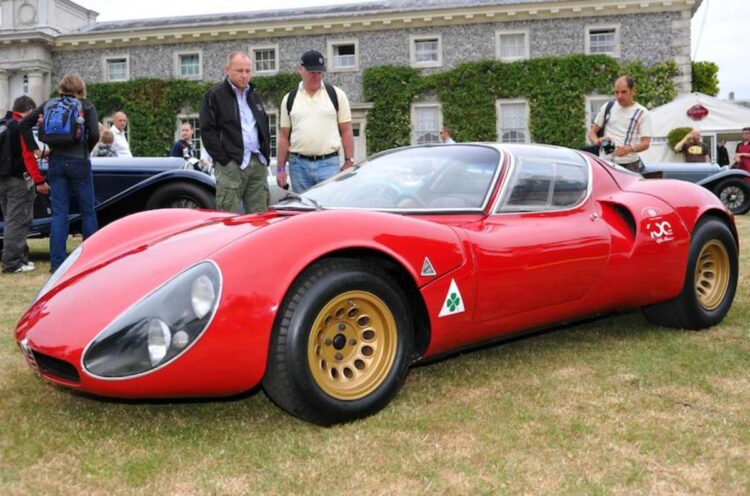
Chiti and Designer Scaglione adopted Peraluman H350 lightweight alloy to be used for the body and agreed that the first prototype would be built at Autodelta. Working space was allocated in the same area of the building where racing engines were assembled
With a shortage of experienced technicians who could help shape the Peraluman alloy, Scaglione brought in skillful craftsmen from the Zagato design studio who traveled each day from Torino to Settimo Milanese so they could supervise building the car.
In 1967, Scaglione and his team built the first prototype of the car at Autodelta’s new competition department workshop in Settimo Milanese right next to the Tipo 300 “Periscopica” race car. This is where the engine and transmission were bolted onto the car’s aluminum tubular chassis body.
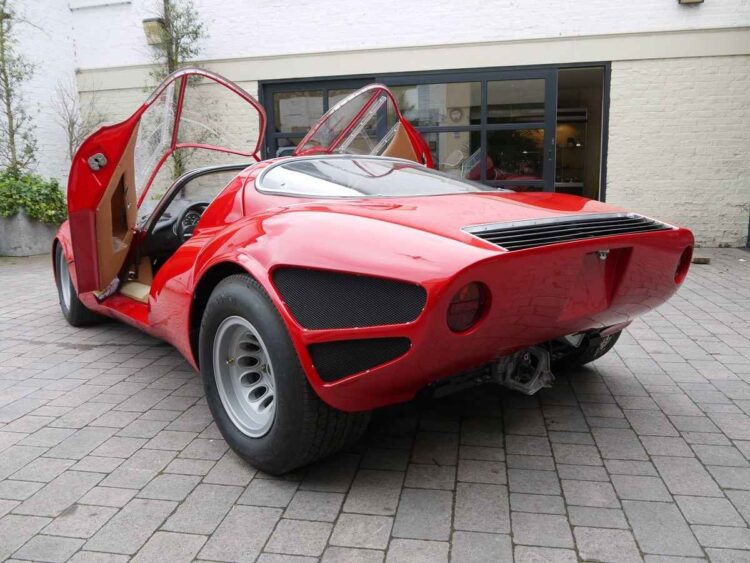
The car’s dihedral (butterfly) doors were the first-ever used by a car manufacturer and are taken for granted in supercars today like the McLaren. These doors and the windows curve upward into the roof of the vehicle and move up and out via A-pillar hinges to make for easier entry and exit, but at the expense of requiring more clearance. “Scissor” doors move straight up using hinge points at the bottom of the A-pillar.
Because each of the 18 examples of the car was hand-built, none were exactly identical. It’s always possible to find slightly different details on nearly identical 33 Stradales. One unusual feature of all the cars was the lack of door locks. But some others had features that were lacked in the others.
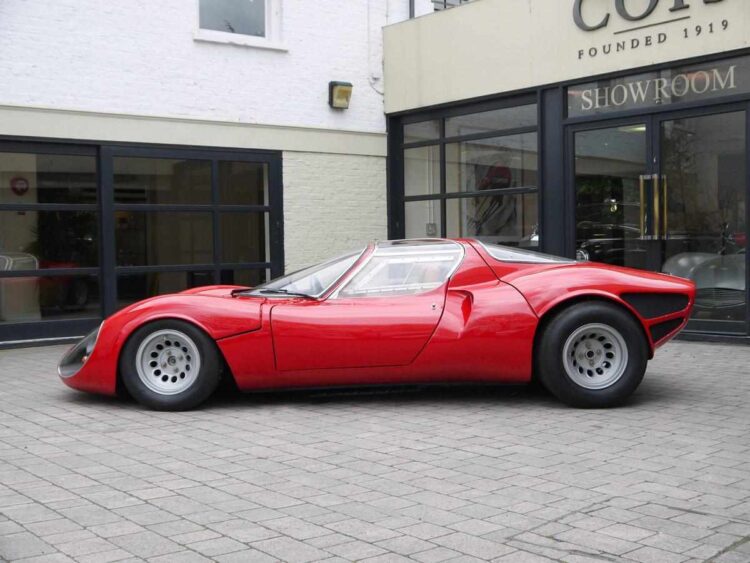
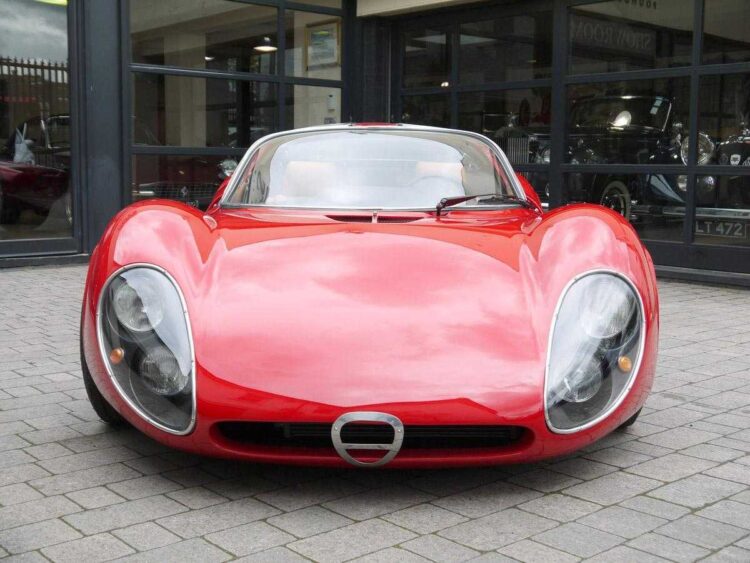
Some cars were fitted with only one windshield wiper, while others came with two. Early models had twin headlights but these were replaced in the last few cars with single lights. Some cars had the fashionable Alfa Romeo four-leaf clover emblem attached to the fenders, while others did not. Some of the late models had vents behind both front and rear wheels to allow hot air from the brakes to exit the wheel wells.
People who see the 33 Stradale for the first time are usually surprised to find it is so small. The car measures slightly under four meters long (3,970 mm/156.3 in) with a width of 1,710-mm (67.3-in) and a height of 991 mm (39-in) with a relatively short wheelbase of 2,350 mm (92.5 in).
Specifications of the Alfa Romeo 33 Stradale
| Production Dates | November 1967 – March 1969 |
| Production Number | 18 |
| Assembly | Milan, Italy (Carrozzeria Marazzi) |
| Body style | 2-door coupé |
| Layout | Rear mid-engine, rear-wheel drive |
| Doors | Butterfly |
| Engine Type | 90° DOHC V-8 (all-aluminum) |
| Displacement | 1,995 cc (121.7 cu in) |
| Compression Ratio | 10.5:1 |
| Valve Train | 4 chain-driven cams/2 valves per cylinder |
| Horsepower | 227 hp (169 kW) @ 8,800 rpm |
| Torque | 152 lb ft @ 7,000 rpm |
| 0-60 mph | < 6 seconds |
| Top speed | 160 mph (260 km/h) |
| Gearbox | 6-speed Colotti manual transaxle |
| Chassis type | Aluminum tubular |
| Wheelbase | 92.5 in (2,350 mm) |
| Length | 156.3 in (3,970 mm) |
| Width | 67.3 in (1,710 mm) |
| Height | 39.0 in (991 mm) |
| Curb weight | 1,543 lb (700 kg) |
Launch of the 33 Stradale
The 33 Stradale was launched on 31 August 1967 at the Paris Salon de L’Auto just before the Italian Formula 1 Grand Prix and it took the automotive world by storm. The car was not only considered astonishingly gorgeous, but it also displayed racing car’s technology and delivered a stunning performance for the day.
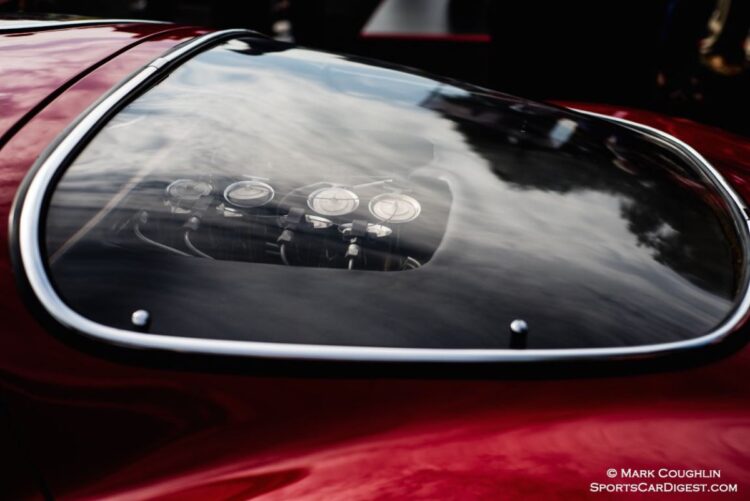
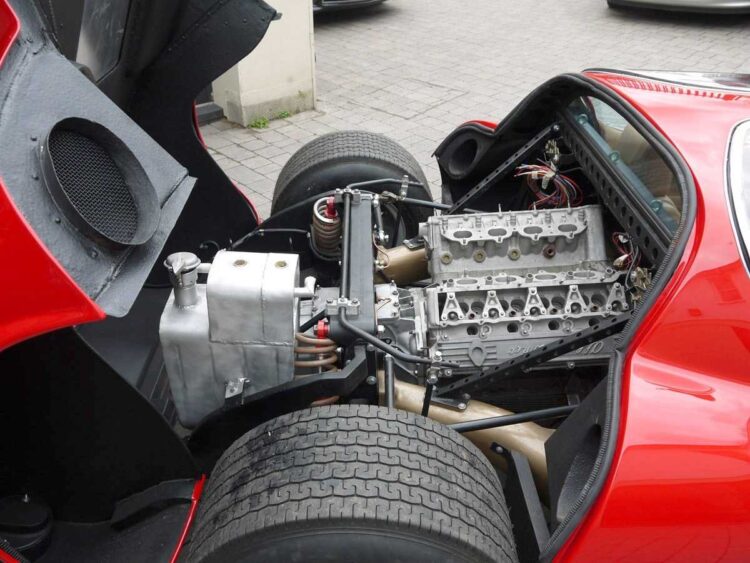
As with the race car, the 33 Stradale’s engine was a 2.0 liter mid-mounted 90-degree V8 with the same redline of 10,000 rpm. The direct-injected four-cam alloy engine differed only slightly from the race-spec power plant and delivered 230 hp at 8,800 rpm with 152 lb-ft (206 Nm) of torque at 7,000 rpm. These figures were approximate as each engine for the 18 cars produced between 1967 and 1969 was completely hand-built.
Although the power and torque figures may not seem sound very strong, the all-aluminum body and svelte size weighed only 1,543 pounds (700 kg) which contributed to performance figures that would be relevant even today.
The 33 Stradale was generally considered on par with other supercars of the era such as the Lamborghini Miura with a 3.9-liter V12 and the Ferrari 365 GTB/4 Daytona, which had a 4.4-liter V12. The car could easily go from 0 to 62 mpg (100 km/h) in about 5.5 seconds and the factory claimed it had a top speed of 262 km/hr (163 mph). Many said that with a red line of 10,000 rpm, the car could easily reach 180 mph (290 km/h).
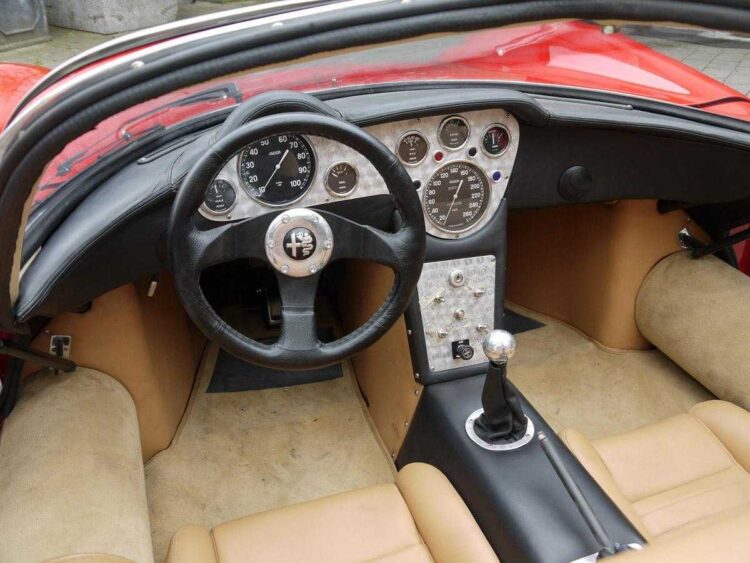
The road-going 33 Stradale was also designed to handle well because of its racing suspension. It has upper and lower control arms positioned at the front, and double trailing arms at the rear in addition to oversize anti-roll bars. There was also exceptional stopping power with Girling disc brakes positioned on all four wheels with the rears mounted inboard. The car rode on small 13-inch Campagnolo magnesium wheels measuring eight-inches in width at the front and 9-inches at the rear.
In 1967 when the Alfa Romeo 33 Stradale was introduced, the price was 9,750,000 Italian lire (about $17,000), more than even the Lamborghini Miura which was priced at 7,700,000 lire (about $13,400) and was the most expensive automobile for sale to the public in 1968. At the time, the average cost of a new car in the U.S. was $2,822.
The first two 33 Stradale prototypes featured magnesium bodies and quad headlights that were later changed due to height regulations. Carrozzeria Marazzi carried out the final assembly of the 18 examples of the car, partially due to the high cost and also because Alfa Romeo wanted to keep the car exclusive.
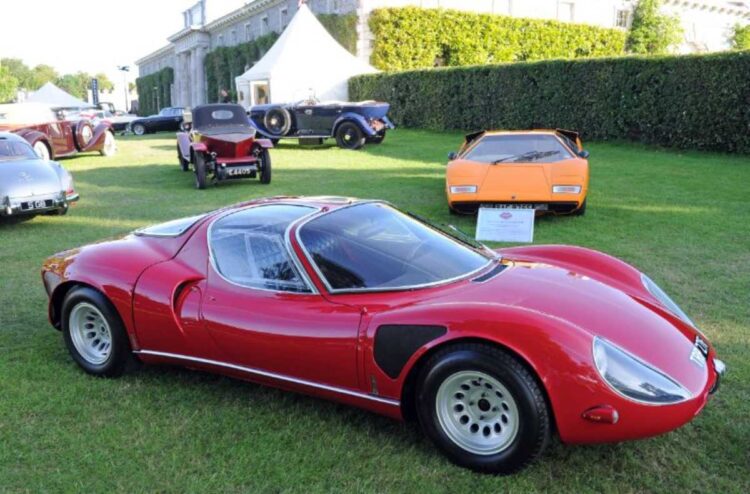
In September 1967, the finished 33 Stradale prototype was proudly presented to the public at the Sport Car Show in Monza. Final testing was completed two months later just before the car’s official presentation at the Torino Car Show in November.
The public was pleased by the car’s beauty and aggressive appearance. However, they were not so happy with its unaffordable price that was higher than almost any other car on the global market.
Only 18 examples of the original T-33 chassis cars that were built to factory specification Scaglione body were produced from 1967 to 1969.
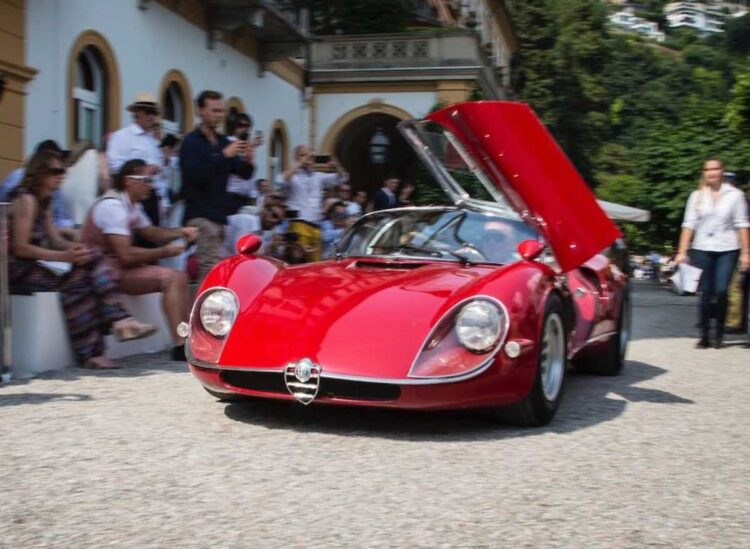
Of the 18 original T-33 chassis cars, five were later transformed into concept cars by Bertone, Giugiaro, Pininfarina, and Italdesign so the companies could exercise their art and produce, some say, some of the most beautiful dream cars that can be admired today. The cars are now exhibited at the Alfa Romeo permanent exhibition in the company museum located in Arese, Italy.
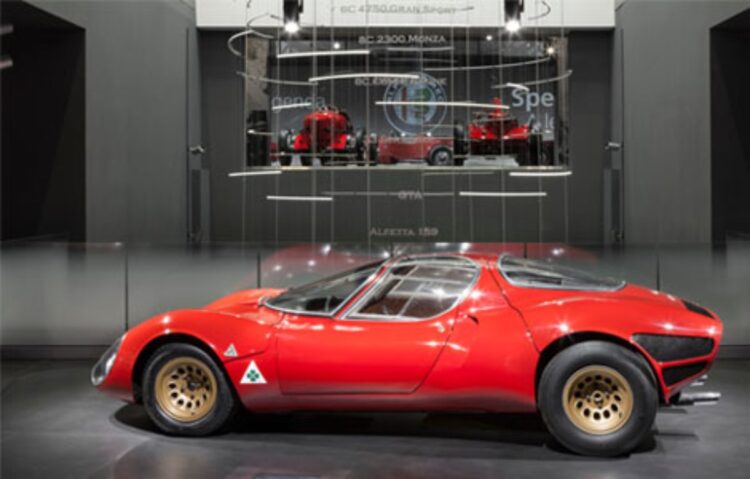
The Alfa Romeo 33 Stradale ‘dream car’ was one of the world’s first supercars. With only 18 beautiful cars produced over its short production life, no other alfa Romeos have influenced and provided so much to the marque’s appeal as the 33 Stradale.


